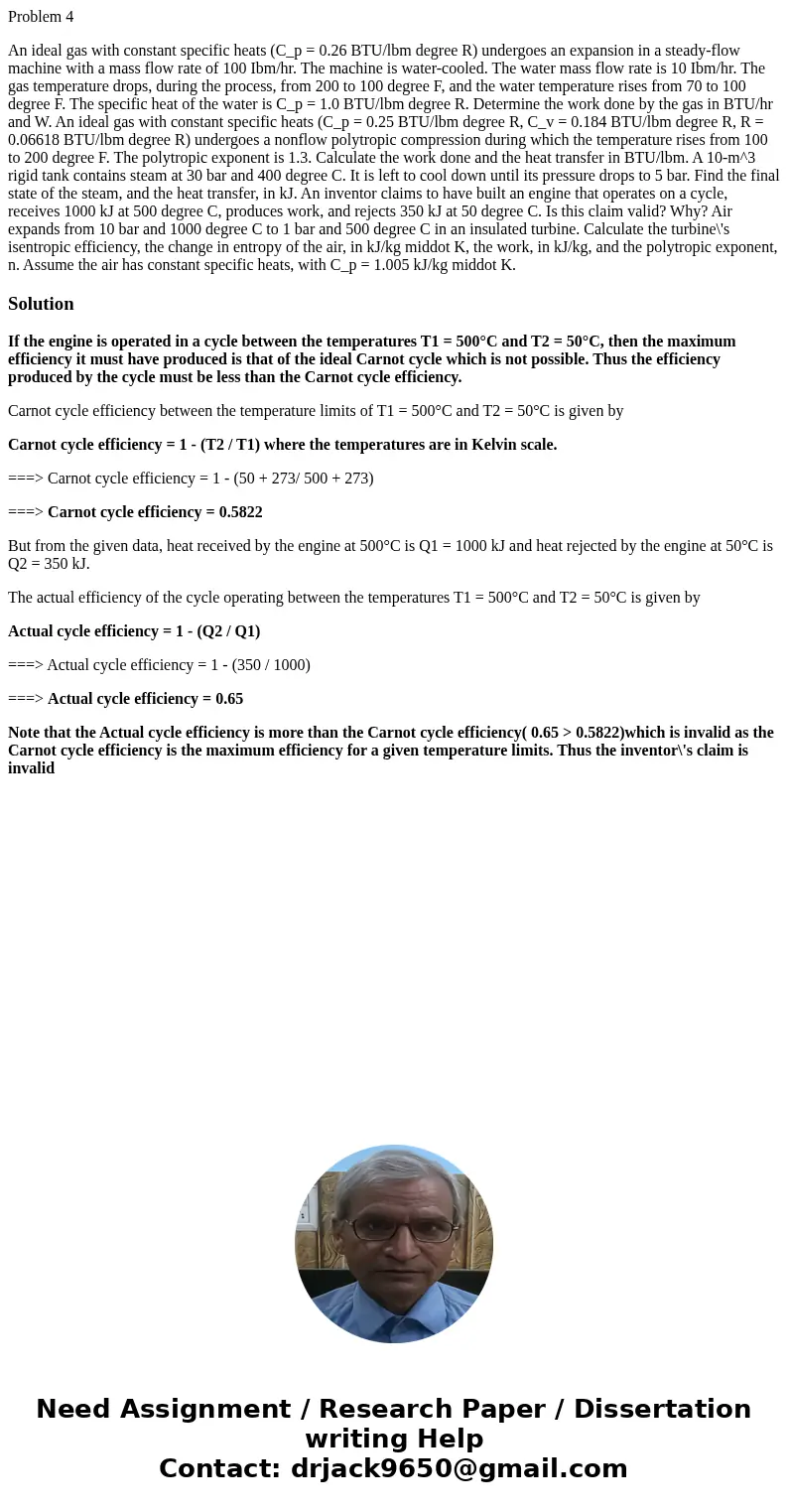Problem 4 An ideal gas with constant specific heats Cp 026
Problem 4
An ideal gas with constant specific heats (C_p = 0.26 BTU/lbm degree R) undergoes an expansion in a steady-flow machine with a mass flow rate of 100 Ibm/hr. The machine is water-cooled. The water mass flow rate is 10 Ibm/hr. The gas temperature drops, during the process, from 200 to 100 degree F, and the water temperature rises from 70 to 100 degree F. The specific heat of the water is C_p = 1.0 BTU/lbm degree R. Determine the work done by the gas in BTU/hr and W. An ideal gas with constant specific heats (C_p = 0.25 BTU/lbm degree R, C_v = 0.184 BTU/lbm degree R, R = 0.06618 BTU/lbm degree R) undergoes a nonflow polytropic compression during which the temperature rises from 100 to 200 degree F. The polytropic exponent is 1.3. Calculate the work done and the heat transfer in BTU/lbm. A 10-m^3 rigid tank contains steam at 30 bar and 400 degree C. It is left to cool down until its pressure drops to 5 bar. Find the final state of the steam, and the heat transfer, in kJ. An inventor claims to have built an engine that operates on a cycle, receives 1000 kJ at 500 degree C, produces work, and rejects 350 kJ at 50 degree C. Is this claim valid? Why? Air expands from 10 bar and 1000 degree C to 1 bar and 500 degree C in an insulated turbine. Calculate the turbine\'s isentropic efficiency, the change in entropy of the air, in kJ/kg middot K, the work, in kJ/kg, and the polytropic exponent, n. Assume the air has constant specific heats, with C_p = 1.005 kJ/kg middot K.Solution
If the engine is operated in a cycle between the temperatures T1 = 500°C and T2 = 50°C, then the maximum efficiency it must have produced is that of the ideal Carnot cycle which is not possible. Thus the efficiency produced by the cycle must be less than the Carnot cycle efficiency.
Carnot cycle efficiency between the temperature limits of T1 = 500°C and T2 = 50°C is given by
Carnot cycle efficiency = 1 - (T2 / T1) where the temperatures are in Kelvin scale.
===> Carnot cycle efficiency = 1 - (50 + 273/ 500 + 273)
===> Carnot cycle efficiency = 0.5822
But from the given data, heat received by the engine at 500°C is Q1 = 1000 kJ and heat rejected by the engine at 50°C is Q2 = 350 kJ.
The actual efficiency of the cycle operating between the temperatures T1 = 500°C and T2 = 50°C is given by
Actual cycle efficiency = 1 - (Q2 / Q1)
===> Actual cycle efficiency = 1 - (350 / 1000)
===> Actual cycle efficiency = 0.65
Note that the Actual cycle efficiency is more than the Carnot cycle efficiency( 0.65 > 0.5822)which is invalid as the Carnot cycle efficiency is the maximum efficiency for a given temperature limits. Thus the inventor\'s claim is invalid

 Homework Sourse
Homework Sourse